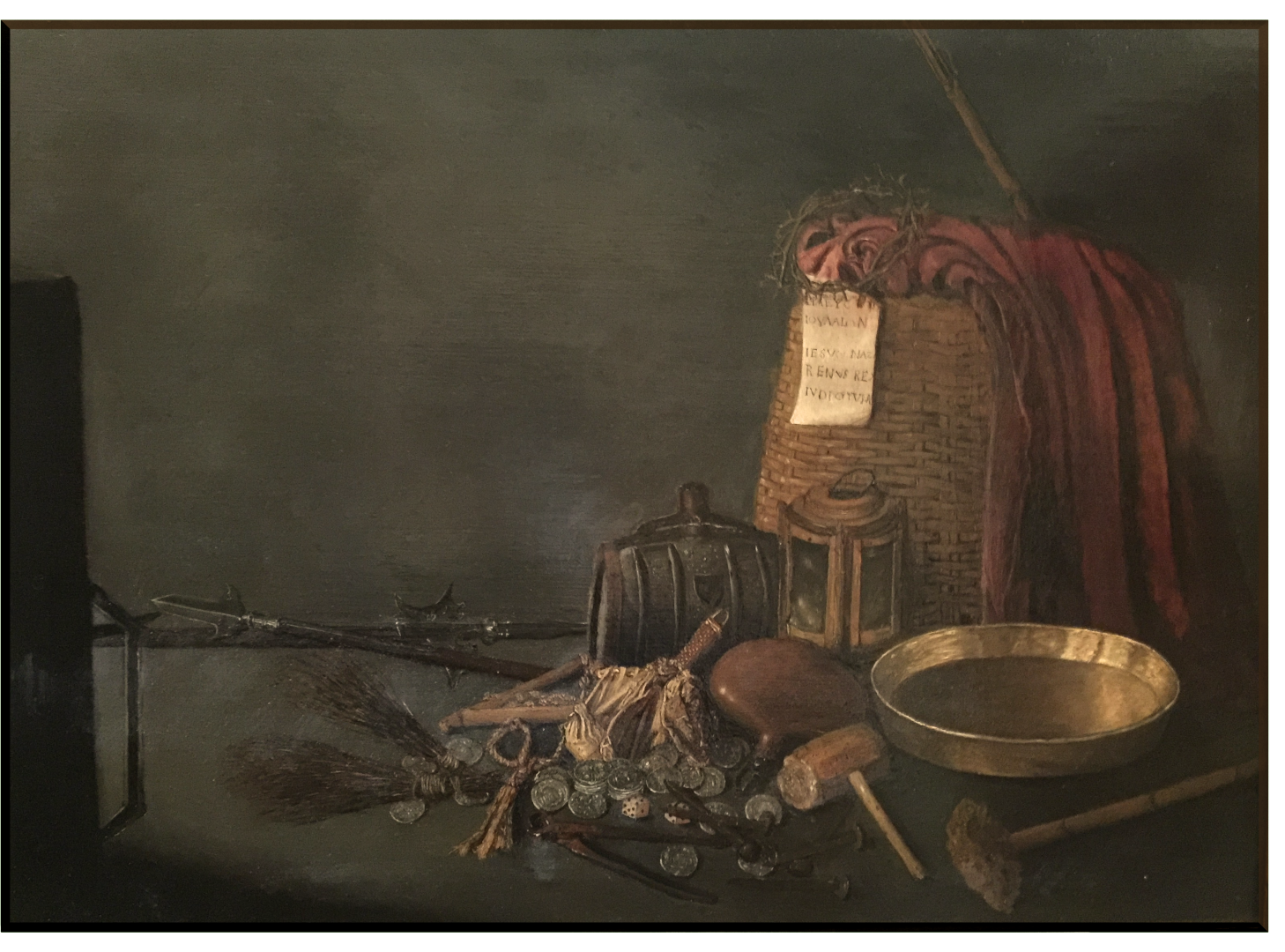Object of the Month: March 2018
The Instruments of the Passion of Christ
Oil on panel
Unknown Dutch
Dutch, 17th century
Genre painting could best be described as a painting that depicts everyday life without idealization. There are many subject matter that fall under the category of genre painting including interior, landscape, and still life. But what sets genre painting apart from other categories is the narratives or moral tales hidden in plain sight.
It is during the seventeenth century in the Netherlands, known as the Dutch Golden Age, that Dutch painting, sciences, military, and trade flourished. Genre paintings were a favorite of every class, which reveals both the increasing urbanization of society and the people’s intense love of their national culture and way of living. Still life genre paintings use symbolism to portray common themes such as vanity, the passing of time, the brevity of life, or specific character qualities (vice or virtue). From the fourteenth century to today, still life paintings use flora, fauna, household items and personal possessions to symbolize ideas, which add depth and meaning to the narrative.
Throughout the Museum & Gallery’s collection, there is only one painting that falls within the category of a still life genre painting. Painted by an unknown seventeenth-century artist, The Instruments of the Passion is filled to the frame with symbolism.
Instead of painting the entire narrative as recorded in the Gospels, the artist depicts objects as a symbolic and literal reminder of Christ’s sacrifice. Each individual element, painted in great detail, references a part of the greater story. The objects included are: a hammer,
nails, dice, pliers, spear, sponge, lantern, halberd (a sixteenth-century spear-like weapon), brass pan, broken reed, wine flasks, crown of thorns, scarlet robe, purse with 30 silver pieces, and an inscribed parchment (translated “Jesus of Nazareth, King of the Jews”).
While this painting may not be one of the biggest or the prettiest in the Collection, the grouping of these objects provides a powerful representation of Christ’s suffering through the simplicity of symbolism.
KC Beach, former M&G staff member
Published in 2018

